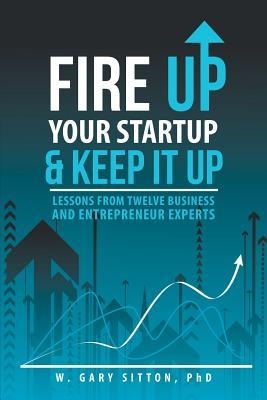

“Stand Out: How to Find Your Breakthrough Idea and Build a Following Around It” by Dorie Clark (Portfolio/Penguin, $26.95).
Thought leader (n.) – a thinker whose ideas merit attention because of expertise in a given field. Those recognized as thought leaders “achieved success not because of some special genius but because they learned how … to present ideas in new and meaningful ways.”
Their ideas target problems and offer solutions that make a difference. Their ideas create forums for discussion, which get others thinking.
The process of becoming a thought leader requires dedication to homework. You have to look beyond the cutting edge of your industry by developing a view of trends. Who knew that Blackberry and Nokia would go from industry leaders to pretty much irrelevant in less than five years? The thought leaders at Apple and Samsung did. Their firms became industry leaders by offering innovative, disruptive solutions.
Individuals can develop future vision by finding the answer to this question: “What are three trends affecting your industry?” To find the answer, you’ll have to dig deeper than the website information of industry and trade associations and publications.
Find out who are the thought leaders in your field. How? By searching the Internet for information on industry topics; dig even deeper and find the individuals behind the information. LinkedIn discussion groups are another source. Customers and frontline staff are sources, too. Find ways to connect with all of them — ideally by asking questions and creating ongoing dialogue.
Once you’ve opened doors, focus your niche. How? Over time, look at your posts that received the most comments and inquiries. Interest from others indicates their need for more information. Author’s caution: Make sure your subject has enough material to stay interesting; long-term relevance makes thought leaders multidimensional.
Promote your niche by expanding your base of knowledge and continually sharing information. More doors will open.
Key takeaway: Thought leaders stand out by becoming a sounding board for others and build their brand throughout the process.
“Fire Up Your Startup &Keep It Up – Lessons from Twelve Business and Entrepreneur Experts” by W. Gary Sitton (iUniverse, $18.95).
Sitton, professor emeritus at California State University, Chico, invited 12 entrepreneurs to participate in a lecture series on entrepreneurship. Here are two insights that entrepreneurs need to get right from the start:
Human resources: There are two equally important parts to HR: 1. Compliance with laws and regulations, and 2. “Strategizing with the business” (i.e. finding the best fit when hiring).
Many entrepreneurs try to handle HR on their own until the business reaches 70-80 employees. That’s a mistake; there’s no way a small business owner can know enough about the two HR components while building the core business. A small business owner I know ran afoul of compliance issues related to employee versus contractor and always complained about the hours she spent sifting through hundreds of résumés for jobs she posted online.
Just as entrepreneurs outsource accounting and payroll functions, they should do so with HR. By spending some time understanding the owner’s business, an HR consulting firm establishes compliance parameters and helps recruit best-fit employees.
Project management: Figuring out how to get from A to B requires integrated execution by prioritizing, defining processes and allocating short-supply resources (e.g. time, people, money, etc.). Before starting projects, invest time in homework.
Identify expected outcomes and their timelines, the top-to-bottom tasks to be performed, resources needed, progress reporting and processes to handle issues (including inter-team conflicts). It also should define the responsibilities of those charged with execution.
With this groundwork laid, the project team needs a project objective statement which clearly defines expectations.
Recommendation: From time to time, reread Appendix 2, which summarizes each chapter’s lessons. These will remind you of what you must do to keep your business in business.
Jim Pawlak is a nationally syndicated reviewer of business books.







